#animalanatomy
Explore tagged Tumblr posts
Text
Something about the Owl
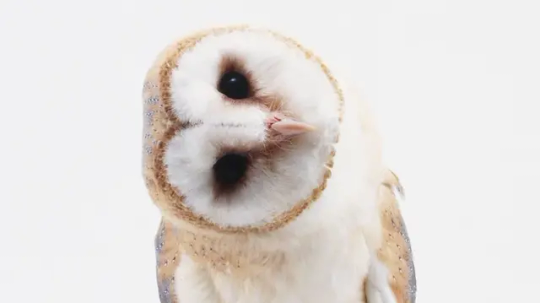
Owls possess exceptional vision, considered their most developed sense. This trait is highlighted by the size of their eyes, which are very large in proportion to their skull. Positioned frontally, an owl's eyes enable three-dimensional (3D) vision, essential for accurately calculating distances. However, since their eyes cannot move within their sockets, they compensate for this limitation with the ability to rotate their head up to 270 degrees, or 135 degrees on each side. This movement allows them to observe their surroundings, aiding in both hunting and defense.
Owls are renowned for their outstanding night vision. Their eyes, adapted for better distance vision than close-up, feature an iris capable of contracting and dilating noticeably depending on the level of light, both during the day and at night.
The owl's particularly flexible neck further enhances their field of vision. Through oscillating and rotational movements, adult owls can accurately spot prey during hunts, while young owls use these motions to hone their visual skills and learn to master them.
#Owls#OwlFacts#BirdVision#NocturnalAnimals#NatureLovers#WildlifePhotography#AnimalBehavior#BirdWatching#NightVision#AnimalAdaptations#BirdsOfPrey#UniqueAnimals#NatureIsAmazing#WildlifeFacts#OwlEyes#PredatorSkills#360Vision#AnimalAnatomy#NatureExploration#WildlifeWonders
2 notes
·
View notes
Text

#interestingfacts 96
Follow for what’s trending and interesting around the world 🌍
#interestingfacts#GiraffeFacts#WildlifeWednesday#AnimalAnatomy#NatureIsAmazing#SafariLife#WildlifeConservation
0 notes
Link
🐾 Understanding veterinary terminology can be a daunting task for pet owners. However, it is essential to comprehend the language used by veterinarians to make informed decisions about your pet's health. 🐾 This comprehensive guide aims to simplify the complex terminology used in veterinary medicine. From anatomy and physiology to diseases and treatments, this guide covers everything you need to know to communicate effectively with your veterinarian. 🐾 Whether you're a new pet owner or an experienced one, this guide will help you understand the terminology used by veterinarians. By learning the language of veterinary medicine, you can advocate for your pet's health and well-being.1. Introduction to Veterinary Terminology: Key Concepts and Definitions🐾 As a veterinary professional, it's essential to have a solid understanding of the terminology used in the field. 📖 This section will cover key concepts and definitions that will help you communicate effectively with colleagues and clients. 🔍 Some important terms to know include anatomy, physiology, pathology, and pharmacology. 💉 Anatomy refers to the structure of an animal's body, while physiology is the study of its functions. 🧬 Pathology is the study of diseases, and pharmacology deals with drugs and their effects on the body. 🔬 Other important concepts to understand include diagnostic testing, medical procedures, and surgical techniques. 🩺 Understanding these terms will help you provide the best possible care for your patients and communicate effectively with other veterinary professionals. 🤓 Keep in mind that veterinary terminology can be complex, but with practice and study, you'll become more confident in your understanding and use of these terms.2. Anatomy and Physiology Terminology: Understanding the BodyLearning anatomy and physiology terminology is crucial to understanding how the body works. Here are some key terms: Anatomy: the study of the structure of the body and its parts. Physiology: the study of how the body functions. Cell: the basic unit of life. Tissue: a group of cells that work together to perform a specific function. Organ: a group of tissues that work together to perform a specific function. Understanding the body's systems is essential to understanding how it works. Here are some key systems: Circulatory system: responsible for transporting blood throughout the body. Respiratory system: responsible for breathing and exchanging gases in the body. Nervous system: responsible for transmitting signals between the brain and the rest of the body. Muscular system: responsible for movement and maintaining posture. Skeletal system: responsible for supporting the body and protecting internal organs. Knowing the terminology for body positions and movements is important for communication in healthcare. Here are some key terms: Anatomical position: standing upright with arms at the sides and palms facing forward. Superior: above or higher in position. Inferior: below or lower in position. Flexion: bending a joint to decrease the angle between two bones. Extension: straightening a joint to increase the angle between two bones. By understanding the terminology of anatomy and physiology, we can better comprehend how the body functions and communicate more effectively about it. 🧐👍3. Disease and Treatment Terminology: Common Conditions and Procedures🩺 Learn the common disease and treatment terminology used in healthcare. From asthma to diabetes, understand the conditions and procedures that affect millions of people worldwide. 🤧 Allergies: An immune system response to a substance that's not harmful to most people. Symptoms include sneezing, itching, and hives. Treatment includes antihistamines and avoidance of triggers. 🩺 Arthritis: A joint disorder that causes inflammation and pain. Common types include osteoarthritis and rheumatoid arthritis. Treatment includes medication, physical therapy, and joint replacement surgery. 💊 Diabetes: A chronic condition that affects how your body uses glucose. Type 1 diabetes is an autoimmune disease, while type 2 diabetes is caused by lifestyle factors. Treatment includes insulin therapy and lifestyle changes. 🧠 Alzheimer's disease: A progressive brain disorder that affects memory and cognitive function. Treatment includes medication and cognitive therapy, but there is no cure. 🤢 Gastrointestinal disorders: A range of conditions that affect the digestive system, including irritable bowel syndrome, Crohn's disease, and ulcerative colitis. Treatment includes medication and dietary changes. 👁️ Cataracts: A clouding of the eye's lens that can cause vision loss. Treatment includes surgery to remove the cloudy lens and replace it with an artificial one. 👄 Root canal: A dental procedure that removes infected or damaged tissue from the inside of a tooth. Treatment includes filling the tooth with a material to prevent further infection. 🏥 Understanding disease and treatment terminology can help you communicate better with healthcare professionals and make informed decisions about your health.4. Diagnostic Testing Terminology: Interpreting Results and RecommendationsDiagnostic testing terminology can be confusing. Understanding the results and recommendations is crucial for proper treatment. Here are some key terms to know: Sensitivity: The ability of a test to correctly identify those with the condition. Specificity: The ability of a test to correctly identify those without the condition. Positive predictive value: The likelihood that a positive test result indicates the presence of the condition. Negative predictive value: The likelihood that a negative test result indicates the absence of the condition. It's important to note that no test is 100% accurate. Results should be interpreted in conjunction with other clinical information. Recommendations for follow-up testing or treatment may vary based on the results. Your healthcare provider can help you understand what the results mean for your specific situation. Don't be afraid to ask questions or seek a second opinion if you're unsure about the results or recommendations. Your health is important! 🧐 Remember, understanding diagnostic testing terminology is key to proper treatment. Don't hesitate to ask questions and seek clarification. 🧐5. Pharmacology Terminology: Medications and Dosages🩺 Understanding pharmacology terminology is crucial for healthcare professionals. Here are some common medication and dosage terms you should know: 💊 Medications can be classified into different categories, such as analgesics, antibiotics, antihypertensives, and more. 💉 Dosages refer to the amount of medication prescribed to a patient. It can be expressed in different units, such as milligrams, micrograms, or international units. 📈 Dosage frequency refers to how often a medication is taken, such as once a day, twice a day, or every four hours. 👨⚕️ Dosage routes refer to the way a medication is administered, such as orally, intravenously, or topically. 💊 Dosage forms refer to the physical form of medication, such as tablets, capsules, injections, or creams. 👩⚕️ It's important to understand medication terminology to ensure that patients receive the correct medication, dosage, and route of administration.6. Surgical Terminology: Procedures and Techniques🔪 Surgical procedures and techniques involve a variety of terms that can be confusing. Here are some common ones to know: 👉 Laparotomy: an incision made through the abdominal wall for surgical access. 👉 Arthroscopy: a minimally invasive procedure that uses a camera to visualize and treat joint problems. 👉 Craniotomy: a surgical procedure that involves removing a portion of the skull to access the brain. 👉 Thoracotomy: an incision made through the chest wall to access the organs inside. 👉 Endoscopy: a procedure that uses a flexible tube with a camera to visualize and treat internal organs. 👨⚕️ Surgeons use various techniques to perform these procedures: 👉 Open surgery: a traditional approach that involves making a large incision to access the surgical site. 👉 Minimally invasive surgery: a newer approach that uses small incisions and specialized instruments to access the site. 👉 Robotic surgery: a type of minimally invasive surgery that uses a robotic system to perform the procedure. 💉 Anesthesia is used to ensure patient comfort during surgery. There are three types: 👉 General anesthesia: the patient is unconscious and feels no pain. 👉 Regional anesthesia: only a specific area of the body is numbed. 👉 Local anesthesia: only a small area of the body is numbed. 👨👩👧👦 Understanding surgical terminology can help patients and their families better understand the procedures they may undergo. Always consult with your healthcare provider for more information.7. Emergency and Critical Care Terminology: Responding to Urgent SituationsIn emergency situations, it's crucial to understand the terminology used by medical professionals. Here are some terms you should know: - Code Blue: A medical emergency that requires immediate resuscitation, often due to cardiac arrest. - Triage: The process of determining the severity of a patient's condition and prioritizing treatment accordingly. - Shock: A life-threatening condition that occurs when the body's organs and tissues don't receive enough oxygen and nutrients. - CPR: Cardiopulmonary resuscitation, a technique used to restore breathing and circulation in a person who has stopped breathing or whose heart has stopped. - Defibrillator: A device used to deliver an electric shock to the heart to restore its normal rhythm. Other important terms include: - Anaphylaxis: A severe allergic reaction that can cause difficulty breathing, swelling, and a drop in blood pressure. - Hemorrhage: Excessive bleeding, which can be internal or external. - Intubation: The insertion of a tube into the airway to help a patient breathe. - Ventilator: A machine that helps a patient breathe by delivering oxygen to the lungs. - Epinephrine: A medication used to treat severe allergic reactions. Knowing these terms can help you communicate more effectively with medical professionals during an emergency. Stay calm and be prepared to provide as much information as possible. 🚑 In conclusion, understanding veterinary terminology is crucial for pet owners and animal lovers. With this comprehensive guide, you can communicate effectively with your veterinarian and understand your pet's condition better. Don't let medical jargon intimidate you, learn the language of your pet's health. Remember, veterinary terminology is constantly evolving, and it's essential to stay up-to-date. Use this guide as a starting point and continue to educate yourself on the latest developments in animal health. 🐾📚👩⚕️ https://emergencyvet.uk/understanding-veterinary-terminology-a-comprehensive-guide/?_unique_id=64911e4036a22
#Uncategorised#animalanatomy#medicaljargon#pethealthcare#veterinarymedicine#veterinaryterminology#aiomatic_0
0 notes
Text
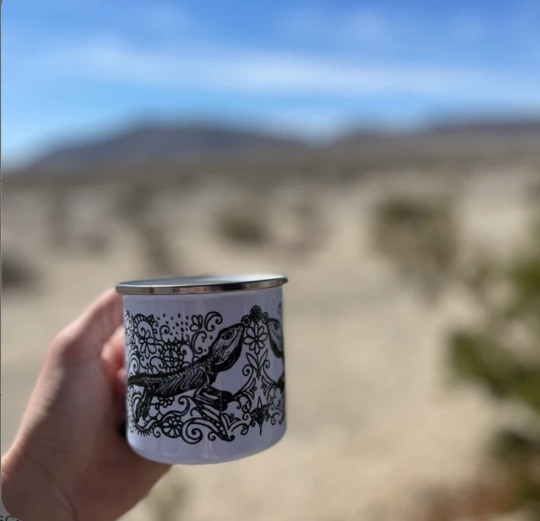
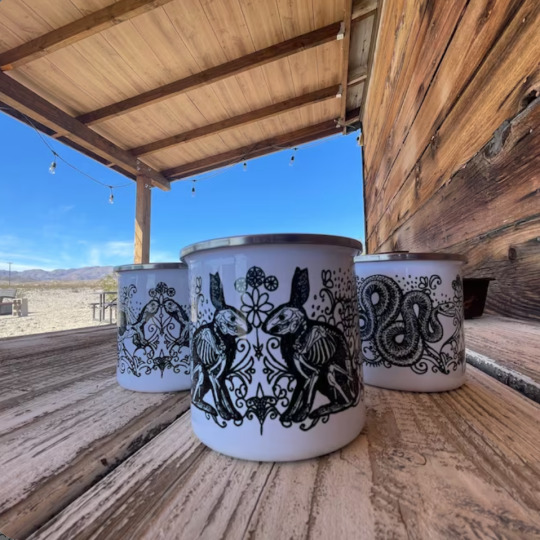
Another happy customer showing off her desert animal-themed Animal Anatomy stainless steel enamel mugs from RiverWood Forest to match her beautiful desert cabin in Cali! SO COOL!! Collect your own skully-themed anatomy mug and fine dining set for those cozy nights under the summer skies this summer 💀🐹🐰🐸🐴🐢🐍🦎🐟🐀 🦜🦔 🌲 Enter the Forest🌲
xoxo, Tina
#animalanatomy#licensing#licensingartist#artlicensing#skeletonart#oddities#odditiesandcuriosities#gothaesthetic#gothdecor#darkcottagecore#goblincore#goblin#illustration#illustrationartists#enamelmugs#riverwood forest#gothicdecor
0 notes
Text
Dystopian Bill Offers Inmates a Year off Their Sentences if They Donate Organs
A bill in the Massachusetts state legislature, proposed by Democratic state Representatives Carlos González and Judith García, to create the Massachusetts Incarcerated Individual Bone Marrow and Organ Donation Program, which the legislation’s sponsors say “would restore bodily autonomy to incarcerated folks” and also… Read more…

View On WordPress
#animalanatomy#bonemarrow#branchesofbiology#carlos#carlosgonzc3a1lez#judith#judithgarcc3ada#kevinring#marrow#medicalspecialties#organdonation#organtransplantation
0 notes
Photo

"Jack, draw me like one of your French night-mares." – Troughtanic But, seriously — An Atlas of #AnimalAnatomy for Artists reprints classic 1956 edition. Skeletal & muscular references for dozens of creatures great and small. 2/19/22 Open 6-9p Mask req'r'd. No DORA containers, please. (at Bonnett's Book Store) https://www.instagram.com/p/CaLKcPTPGcm/?utm_medium=tumblr
0 notes
Photo

DOMO ARIGATO to Miss Biko the African Grey Parrot and @adanae876 for giving students an AWESOME Animated Animals Life Drawing experience for August! This was our second LIVE animal life drawing class in the Drawing Dojo! JOIN US every Wednesday from 6:30-8:00pm for Cosplay Figure Drawing Class! #africangrey #africangreyparrot #animaldrawing #animalanatomy #artlesson #drawingclass #figuredrawing #quicksketch #gesturedrawing #lifedrawing #cosplay #simivalley #simivalleytowncenter #ninjatoonstudio #ninjatoons #artninja #theartninja (at NinjaToons) https://www.instagram.com/p/CULnrCbPInp/?utm_medium=tumblr
#africangrey#africangreyparrot#animaldrawing#animalanatomy#artlesson#drawingclass#figuredrawing#quicksketch#gesturedrawing#lifedrawing#cosplay#simivalley#simivalleytowncenter#ninjatoonstudio#ninjatoons#artninja#theartninja
0 notes
Photo

It is Wednesday my dudes! New froggie print in my Etsy 🐸❤ (I've also just added Boa Constrictor and Chameleon! 🐍🦎) #AnimalAnatomy #AnatomyOfATreeFrog https://www.instagram.com/p/CQL1dKbJpH7/?utm_medium=tumblr
0 notes
Text

#interestingfacts 84
Follow me for more interesting facts and what’s trending around the world 🌍
#interestingfacts#AnimalFacts#Cows#VeterinaryScience#Ruminants#Agriculture#FarmLife#LivestockCare#AnimalAnatomy#SustainableFarming#AgriculturalEducation
0 notes
Photo
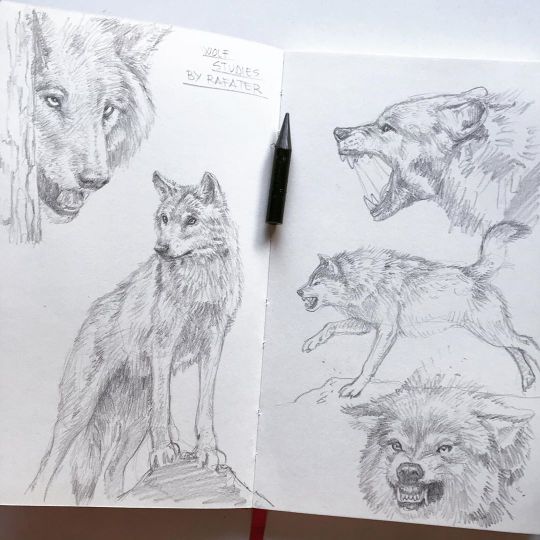
Moar #sketches from my #sketchbook : wolves 🐺 . . . #octoberchallenge #wolf #animalanatomy #animalstudies #quadruped #pencil #drawing #desenho #dessin #çizim #sanat #artgram #artwork #artecontemporaneo #artofinstagram #loveart #moleskinesketchbook https://www.instagram.com/p/CF4r-iIls1-/?igshid=l1klbblx3nf8
#sketches#sketchbook#octoberchallenge#wolf#animalanatomy#animalstudies#quadruped#pencil#drawing#desenho#dessin#çizim#sanat#artgram#artwork#artecontemporaneo#artofinstagram#loveart#moleskinesketchbook
1 note
·
View note
Photo

Too tired to do much after finishing this week's lighting coursework, but there is always time to fit in a bit of sculpting. An hour or so's work on the hyena skull - starting to take shape.
#zbrush#sculpting#animalsculpt#animalanatomy#zbrushanimal#sculptinganimals#3dsculpting#3dart#hyena#spottedhyena
3 notes
·
View notes
Photo


Wild bull and cow anatomy study ( Today’s routine )
5 notes
·
View notes
Photo

Horse skeleton study. #animalanatomy #animalskeleton https://www.instagram.com/p/B8zXFuoDiQH/?igshid=m02av3uyyprt
0 notes
Photo

WIP! 16/02/20 #skullking #animalanatomy #tutorial #creature #onedayonecreature #sphinxcat #proartists #sketch #artofdrawingg #moleskine #sketchbook #panama #instaartist #instadrawing #conceptart #sketching #valkyriestyle #art #artist_sharing #tiger #artistoninstagram #artistoftheday #drawthisinyourstyle #valkyrie #practice #conceptartist #dibujar https://www.instagram.com/p/B8pTDclhn0d/?igshid=12gz7s18sqxd0
#skullking#animalanatomy#tutorial#creature#onedayonecreature#sphinxcat#proartists#sketch#artofdrawingg#moleskine#sketchbook#panama#instaartist#instadrawing#conceptart#sketching#valkyriestyle#art#artist_sharing#tiger#artistoninstagram#artistoftheday#drawthisinyourstyle#valkyrie#practice#conceptartist#dibujar
0 notes
Photo
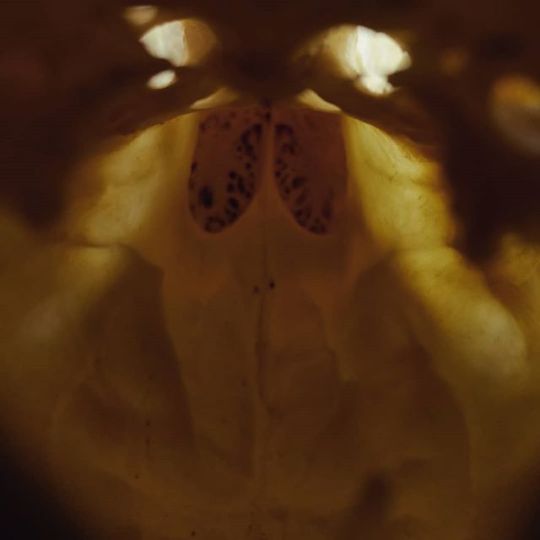
Here's another look, this time with the inner cranium more visible (dorsal downwards). Amazing, isn't it? You can see each ridge and ripple, see exactly where the brain was. . . . . . . . . . . . . . posted on Instagram - https://ift.tt/2ujqvcR
#bonecollector#vultureculture#skullcollection#dogskull#animalanatomy#deadwhenwemet#thevaultoftheself
4 notes
·
View notes
Photo

DOMO ARIGATO to Miss Biko the African Grey Parrot and @adanae876 for giving students an AWESOME Animated Animals Life Drawing experience for August! This was our second LIVE animal life drawing class in the Drawing Dojo! JOIN US every Wednesday from 6:30-8:00pm for Cosplay Figure Drawing Class! #africangrey #africangreyparrot #animaldrawing #animalanatomy #artlesson #drawingclass #figuredrawing #quicksketch #gesturedrawing #lifedrawing #cosplay #simivalley #simivalleytowncenter #ninjatoonstudio #ninjatoons #artninja #theartninja (at NinjaToons) https://www.instagram.com/p/CULnSf_vaEW/?utm_medium=tumblr
#africangrey#africangreyparrot#animaldrawing#animalanatomy#artlesson#drawingclass#figuredrawing#quicksketch#gesturedrawing#lifedrawing#cosplay#simivalley#simivalleytowncenter#ninjatoonstudio#ninjatoons#artninja#theartninja
0 notes